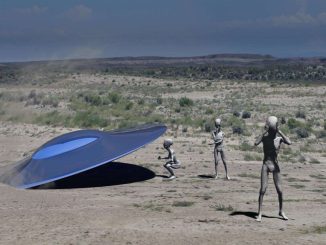As humanity’s understanding of the cosmos deepens, our search for extraterrestrial life extends beyond our home planet. One celestial body that has captured the imagination of scientists and space enthusiasts alike is Saturn’s moon, Titan. With its thick atmosphere and unique conditions, Titan stands out as a potential candidate for hosting alien life. In this exploration, we delve into the possibilities of what life on Titan might look like, offering a glimpse into the myterious realm of extraterrestrial existence.
I. Titan’s Unique Environment: A Potential Haven for Life

a. Methane Lakes and Rivers: Titan boasts a landscape unlike any other in our solar system, with vast lakes and rivers of liquid methane and ethane. These hydrocarbon-rich features create a potential niche for life forms that could harness these compounds in a manner analogous to how Earth life utilizes water.
b. Thick Atmosphere: Titan’s dense atmosphere primarily consists of nitrogen, similar to Earth’s, with traces of methane and ethane. This atmosphere shields the moon’s surface from harmful cosmic radiation and provides an intriguing backdrop for the development of extraterrestrial life.
II. Hypothetical Life Forms on Titan

a. Methanogenic Organisms: Given the abundance of methane, hypothetical life on Titan might be methane-based. Methanogenic organisms could metabolize methane and other hydrocarbons, using them as energy sources and building blocks for their biochemistry. Such life forms would present a fascinating departure from the carbon-based life we know on Earth.
b. Adaptations to Cold: Titan’s frigid temperatures, averaging around -290 degrees Fahrenheit (-179 degrees Celsius), pose a unique challenge for potential life forms. Hypothetical aliens might have evolved adaptations to thrive in extreme cold, potentially employing biochemical processes distinct from those found in Earth organisms.
III. Myteries of Titan’s Hidden Life

a. Subsurface Oceans: Scientists speculate about the possibility of subsurface oceans beneath Titan’s icy crust. If these oceans exist, they could harbor life forms shielded from the harsh surface conditions. The potential myterity of what resides beneath Titan’s icy shell adds an intriguing layer to our quest for extraterrestrial life.
b. Biochemical Diversity: Life on Titan, if it exists, might utilize biochemical pathways vastly different from Earth life. The myterity lies in the unknown intricacies of Titan’s hypothetical ecosystems, challenging our conventional understanding of the conditions required for life to thrive.
IV. Myterity and Alien UFO

a. A Titanian Perspective: Imagining life on Titan extends our perspective on the diversity of extraterrestrial life. The possibility of methane-based organisms challenges our preconceptions and fuels the myterity surrounding the potential for life beyond Earth. Titan, with its unique environment, presents an opportunity to explore different avenues in the search for alien life.
b. Implications for UFO Studies: As we unravel the myteries of Titan, our understanding of potential life on other celestial bodies evolves. Titan’s unique conditions and hypothetical life forms prompt us to reevaluate our approach to identifying signs of life in the cosmos. The myterity associated with Titan’s hidden life extends to the broader exploration of unidentified flying objects (UFOs) and their potential connection to extraterrestrial life.
The exploration of what alien life might be like on Titan takes us on a journey into the myterious realm of possibilities beyond our planet. Titan’s unique conditions offer a tantalizing glimpse into what extraterrestrial ecosystems could entail. As we contemplate the potential for methane-based life forms and subsurface oceans, the myterity surrounding Titan’s hidden life invites us to embrace the unknown and challenges us to redefine our understanding of life in the cosmos. In the grand tapestry of the universe, Titan stands as a testament to the myterity that awaits us beyond our celestial doorstep.








